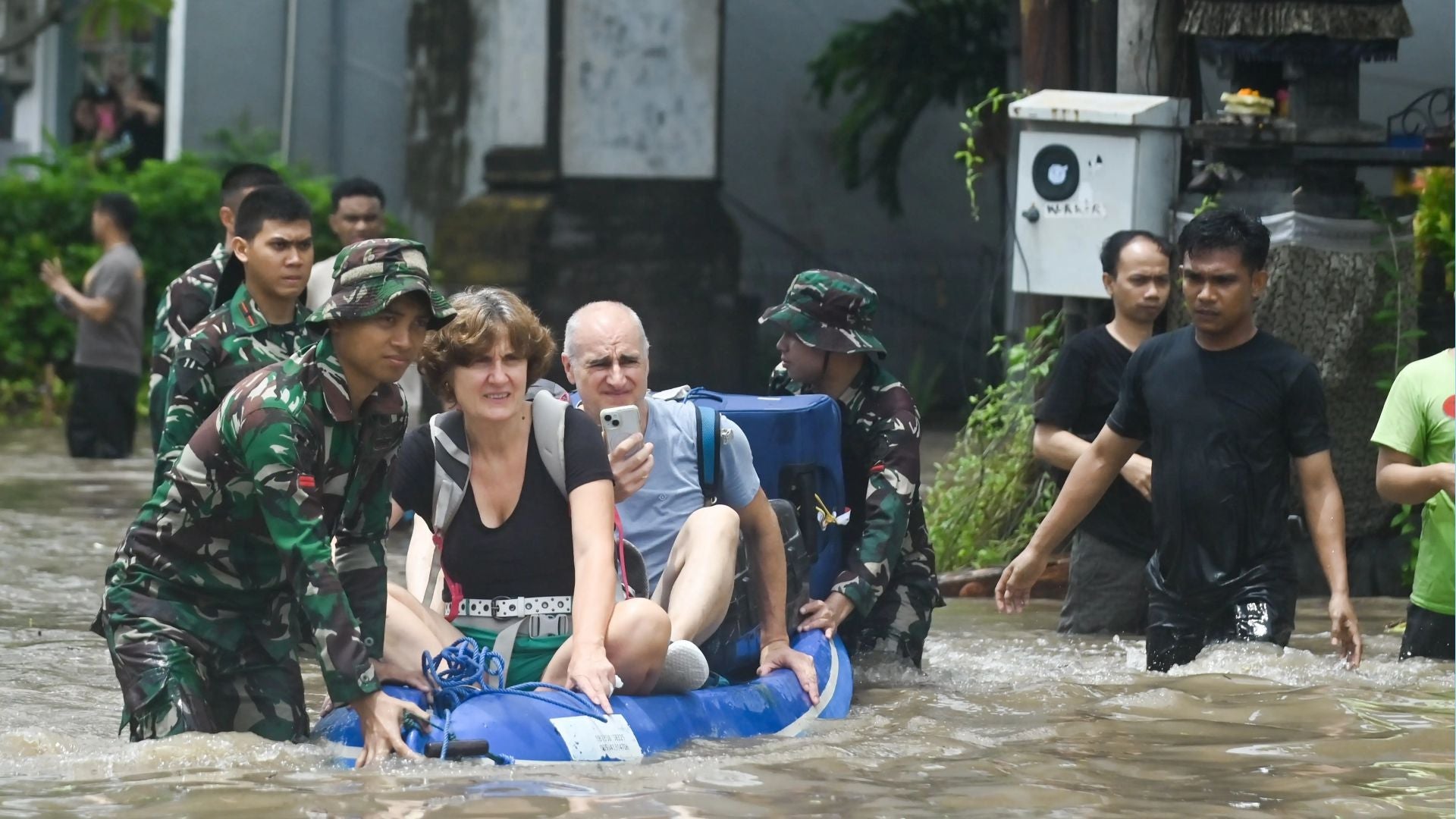- Bali’s idyllic image hides a growing air quality problem from traffic, construction, and open burning.
- PM2.5 levels in Denpasar and Seminyak exceed WHO guidelines, with millions of vehicles worsening pollution.
- Pollutants include PM2.5, NO₂, CO, VOCs—linked to respiratory and cardiovascular health risks.
- Blueair air purifiers offer effective indoor protection, making homes, villas, hotels, and gyms truly healthy sanctuaries.
Bali has long been imagined as a sanctuary of clean breezes, rice field aromas, and salty ocean air. It is celebrated worldwide as a place to restore and recharge. But behind the postcard views, the island’s air quality is no longer as pristine as many assume. Rapid urban development, population growth, heavy traffic, and booming tourism have created a less visible but significant problem: the air itself.
Congested areas such as Kuta, Sanur, Seminyak, Canggu, and even Pererenan now experience the kind of vehicle density once unthinkable for a small island. Alongside this, construction dust fills the air, while open burning of trash and dried crops continues in both villages and urban neighborhoods. What was once a rural practice of burning harvested farmland now often takes place dangerously close to homes and villas, directly affecting the quality of the air people breathe.

Plastic waste and polluted beaches are often spotlighted in the media. Yet, what receives far less attention is the air pollution quietly settling into daily life. Many still assume that Bali’s air is naturally clean—something guaranteed by rice paddies, ocean breezes, and open spaces. But the truth is more complicated.
Why Is Bali’s Air Becoming Polluted?
Bali’s charm has long relied on its natural beauty, but the same forces that make it thrive as a global destination are also fueling its air pollution. Several factors now combine to quietly worsen the island’s air quality:

-
Uncontrolled traffic growth: Millions of motorbikes and cars jam Bali’s narrow roads every day, releasing exhaust filled with NO₂ and fine particles.
- Open waste burning: Limited waste facilities lead residents to burn trash openly, producing toxic smoke and ultrafine soot.
- Construction and urban expansion: Rapid development across tourist areas like Canggu and Ubud generates heavy dust and micro-particles.
What’s Actually in the Air?
Recent data makes the picture clearer:
- In Denpasar, current PM2.5 levels average around 24 µg/m³, nearly five times higher than the World Health Organization’s guideline for safe long-term exposure.
- Even areas close to the ocean, like Seminyak, often register PM2.5 around 13-14 µg/m³—already above WHO recommendations.
- Vehicle ownership in Bali has exploded. With millions of registered cars and motorbikes for a population of just over four million, emissions of nitrogen dioxide (NO₂), carbon monoxide (CO), and hydrocarbons are a constant presence in the air.
- Research in tourism-dense regions like Badung, Gianyar, and Tabanan highlights elevated levels of chemical pollutants from both traffic and burning, often higher than international standards for healthy exposure.

Taking Control Indoors
The outdoor environment is not always within one’s control. Traffic will continue, crop burning will persist seasonally, and construction is unlikely to slow. But there is one space where individuals can make a difference: indoors.
Blueair air purifiers are designed precisely for this challenge. By combining electrostatic and mechanical filtration, they efficiently capture harmful particles and many gaseous pollutants, while still delivering powerful airflow.
Here’s why they matter in Bali:

- Removal of ultrafine particles (PM2.5 and smaller): Keeps indoor air clear of the invisible pollutants that travel deepest into the lungs.
- Filtration of odors and gases: Helps reduce the impact of burning trash, traffic fumes, and construction dust that drift inside.
- Wellness at home and in shared spaces: Cleaner air supports better rest, stronger immunity, and more energy for daily activities.
- Ideal for villas, hotels, and gyms: Spaces that promise wellness and relaxation benefit greatly from ensuring indoor air lives up to expectations.
Conclusion
Bali remains a place of beauty and inspiration. Yet, holding on to the belief that its air is naturally pure can be misleading. Awareness of the island’s evolving air quality is essential for protecting health and wellbeing. While broader solutions such as sustainable transport and waste management are critical, personal steps matter too. Bringing clean air indoors with a reliable purifier like Blueair ensures that the sanctuary many seek in Bali can still be experienced—not just in sight, but in every breath.
Sources:





Bagikan:
When the Rains Unleash: Bali’s Flooding Crisis and Hidden Indoor Risks